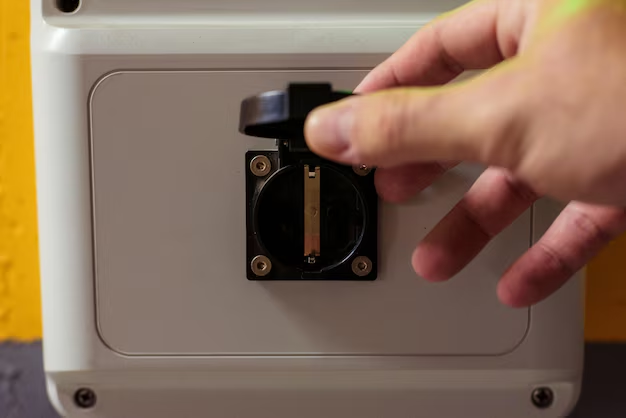Is Your Fridge Ready? Everything You Need to Know About Plugging In After Moving
Moving heavy appliances like refrigerators can be tricky, and after the physical effort of getting it into your new space, the pressing question arises: when can you safely plug it in? Understanding the proper handling of your refrigerator during and after a move is crucial not only for its longevity but also for your peace of mind.
Today's guide explores whether you can instantly plug in your refrigerator after moving it and delves into key considerations for ensuring its optimal performance in your new home.
The Essentials: Why Timing Matters
Refrigerator Basics
Modern refrigerators are more than just storage spaces; they are complex appliances with intricate systems, crucial among them being the cooling system. The operation of these systems can be affected by sudden movements, which is why it’s important to handle them correctly.
Potential Risks of Immediate Plugging
Plugging in a refrigerator right after a move can lead to two main issues:
- Compressor Damage: The compressor may seize if the refrigerant isn't settled, leading to inefficient cooling or a complete breakdown.
- Oil Settling: Compressor oils can move from their designated spots during transport. Connecting power without allowing time for settling can lead to mechanical problems.
Settling Down: How Long Should You Wait?
Standard Recommendations
Most manufacturers suggest waiting at least 2 to 24 hours before plugging in a refrigerator after moving. This timeframe allows the refrigerant and oils to settle back into place, safeguarding the appliance’s internal components.
Variables to Consider
- Distance and Angle Moved: If your refrigerator was moved upright over a short distance, it might need less than 24 hours.
- Duration of Tilted Position: If it was tilted significantly or placed on its side, it’s wise to wait on the longer end of the recommendation.
Moving Preparations: Tips for a Smooth Transition
Pre-Move Preparations
Prior to your move, there are several steps to take to ensure your refrigerator is ready for the journey:
- Defrosting: At least 24 hours before moving, unplug and defrost your fridge to prevent water leakage during transit.
- Cleaning: Remove all food and clean interiors to prevent odors and spoilage issues in the new location.
Securing Your Appliances
During the move, intuitively secure all removable shelves and drawers to prevent damage. Transport the fridge in a vertical position if possible to minimize the need for lengthy settling.
Setting Up: Positioning Your Fridge for Optimal Efficiency
Post-Move Positioning
Once in its new home, proper positioning is key for efficient operation:
- Level Ground: Ensure your refrigerator is level to avoid compressor strain.
- Ventilation Space: Leave sufficient space around your fridge for air circulation, preventing overheating and energy inefficiency.
Initial Operations
After settling:
- Plug-In: Turn the refrigerator on, setting the internal thermostat to its recommended cool setting.
- Monitor Operation: Observe any unusual noises. Slight sounds are normal, but loud or persistent noise could indicate an issue.
Enhancing Refrigerator Efficiency Post-Move
Temperature Management
Adjust settings based on regular monitoring. An ideal refrigerator temperature is below 40°F (4°C).
Energy Management Tips
- Tax on Power: Consider moving large appliances during periods when energy usage is low.
- Routine Maintenance: Regularly cleaning your refrigerator’s coils can enhance efficiency.
Watersource Connection
For fridges with built-in water or ice dispensers, ensure the water source is securely connected and free of leaks.
A Quick Skimmable Summary 📝
Here’s a handy checklist to ensure your fridge runs smoothly post-move:
- Wait Time: After moving, wait 2 to 24 hours before plugging in your fridge.
- Transportation Tips: Keep it upright; secure loose parts; give clearance for air circulation.
- Setup Essentials:
- 🎚️ Ensure stability on level ground.
- 🌀 Leave adequate ventilation space.
- Operational Check: First plug-in should include monitoring for unusual sounds.
- Efficiency Practices:
- 💧 Ensure proper time and temperature for defrosting pre-move.
- 🔌 Consider optimal timings for plugging during low energy periods.
- Regular Maintenance: Clean coils, ensure secure water sourcing.
Final Thoughts: Keeping Your Cool
Your refrigerator is a crucial home appliance, integral not only for food storage but for overall kitchen functionality. Understanding how to handle your fridge post-move plays a pivotal role in maintaining its efficiency and prolonging its lifespan. By adhering to these guidelines, you ensure your appliance starts off—and stays on—the right track.
Let these insights be your go-to resource for a smooth, stress-free setup in your new abode, assuring you that your refrigerator serves your needs efficiently and reliably.
